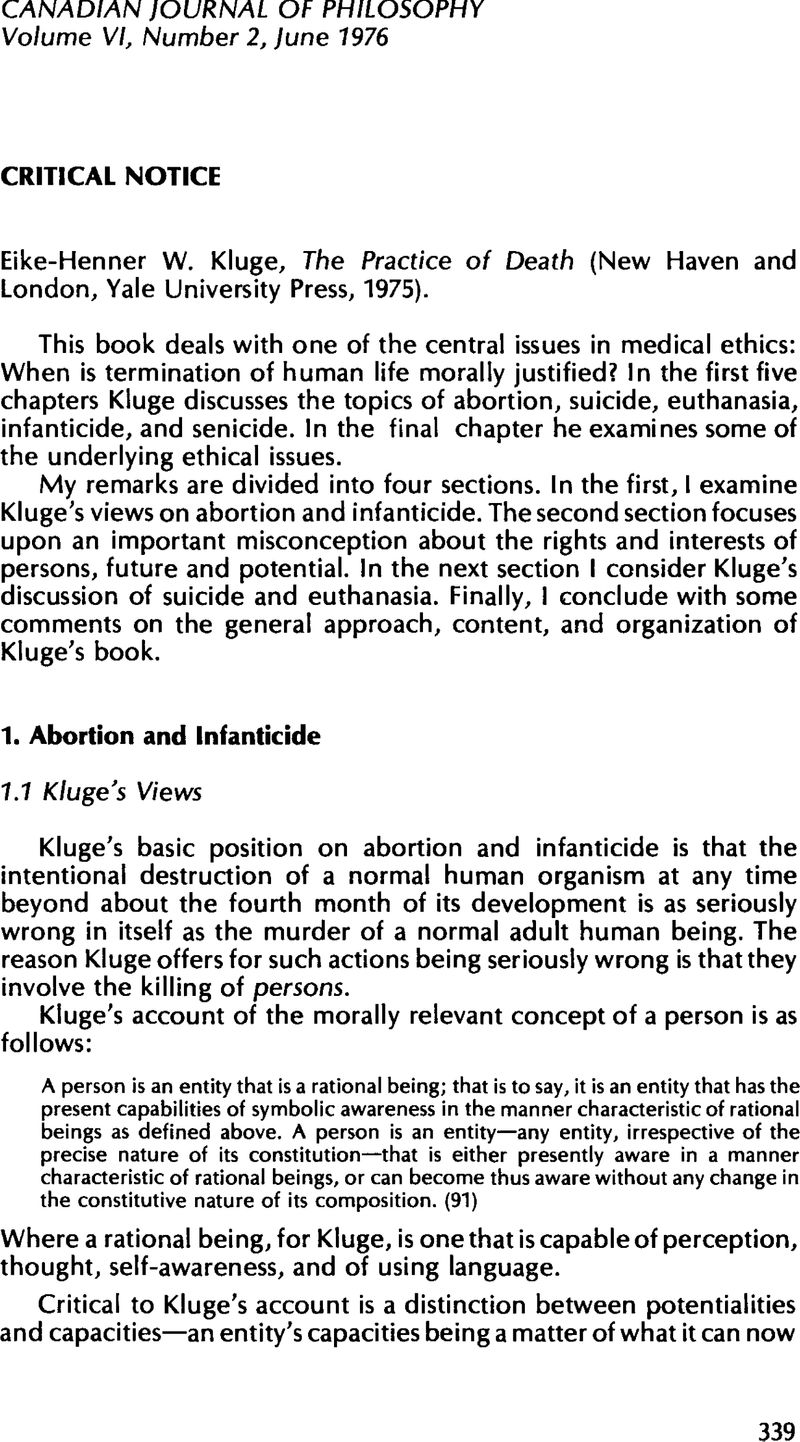No CrossRef data available.
Published online by Cambridge University Press: 01 January 2020

1 Thomson, Judith Jarvis “A Defense of Abortion,” Philosophy & Public Affairs, Volume I, Number 1, Fall 1971Google Scholar.
2 Lippold, Olof “Are Alpha Waves Artefactual?” New Scientist, 12 March, 1970, p. 506Google Scholar.
3 Thus Luria, A.R. in his book Higher Cortical Functions in Man (London, Tavistock Publications, 1966)Google Scholar says that the material basis of the higher mental functions consists of complex functional systems of conjointly working cortical zones which “are not found ready-made in the child at birth (as in the case of respiratory and other systems) and do not mature independently, but are formed in the process of social contact and objective activity by the child … ” (35). Useful discussion, together with additional references, can be found in Brain Development and Behavior, edited by Sterman, M.B. McGinty, D.J. and Adinolfi, A.M. (New York and London, Academic Press, 1971)Google Scholar, Brain and Early Behavior-Development in the Fetus and Infant, edited by Robinson, R.I. (New York and London, Academic Press, 1969)Google Scholar, and Regional Development of the Brain in Early Life, edited by Minkowski, A. (Philadelphia, F.A. Davis Company, 1969)Google Scholar.
4 Compare my discussion in section Ill of “A Defense of Abortion and Infanticide,” in The Problem of Abortion, edited by Feinberg, Joel (Belmont, Wadsworth Publishing Company, 1973)Google Scholar.
5 This view is questioned by Hare, R.M. who argues that there is a formal principle which underlies most theories of moral reasoning and which entails that intentionally refraining from conception is in itself morally wrong. See pages 207-8 and 212-14 of his article, “Abortion and the Golden Rule,” Philosophy & Public Affairs, Volume IV, Number 3, Spring, 1975Google Scholar. The principle upon which Hare's argument rests is, however, unacceptable, for reasons that will be indicated in the next section.
6 The principle to which Hare appeals in his argument against abortion (pages 207-9 of “Abortion and the Golden Rule”) also has this unacceptable consequence. And if the principle is revised to avoid this implication, it will no longer serve as the basis of an argument to show that abortion is in itself morally wrong.
7 I am indebted to my colleagues, especially Frank Snare and Michael Stocker, for some very helpful comments on my discussion in this section.